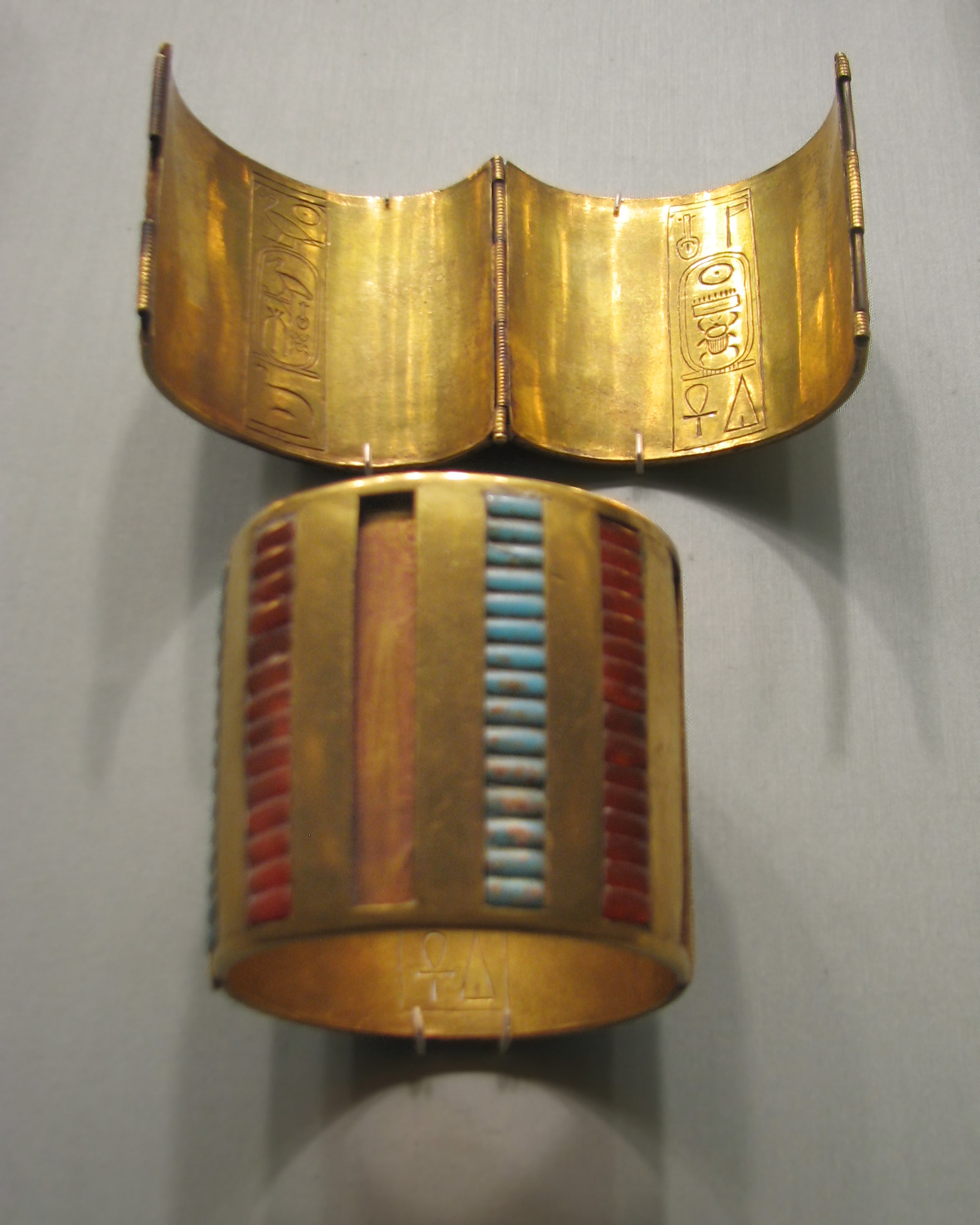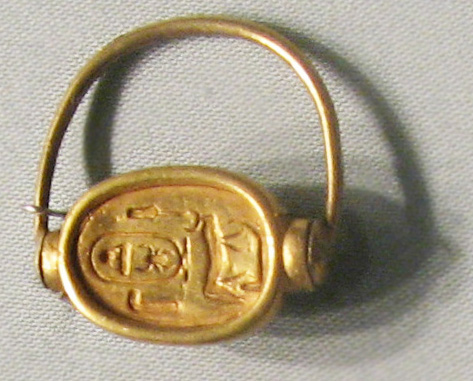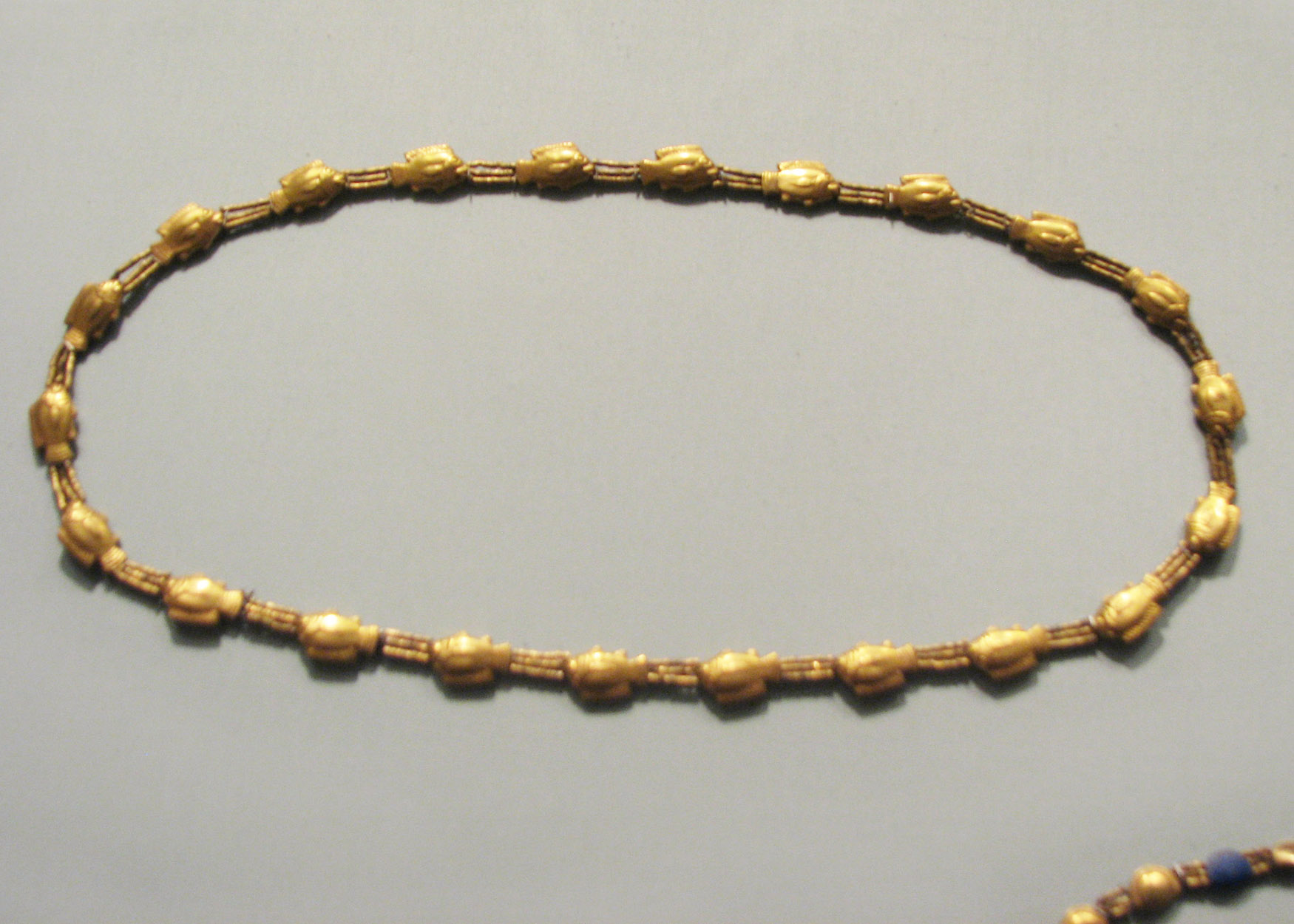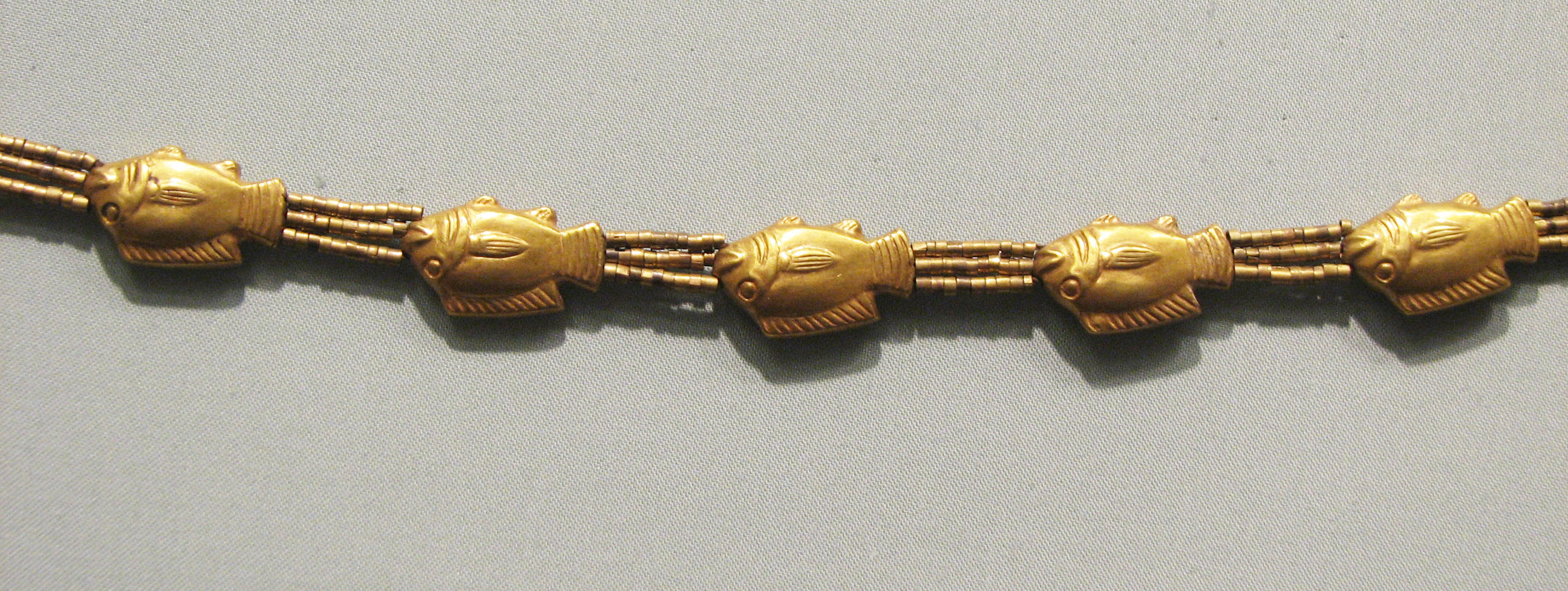
Hinged bracelets
New Kingdom, Dynasty 18, reign of Thutmose III, ca. 1479–1425 B.C.E.
Egypt, Upper Egypt; Thebes, Wadi Gabbanat el-Qurud, Tomb of the 3 Foreign Wives of Thutmose III, Wadi D, Tomb 1
Gold, carnelian, turquoise, glass, W. 5.9 cm (2 5/16 in)
Fletcher Fund, 1926
"Three pairs of hinged bracelets (26.8.125–.130) are associated with the tomb of three foreign wives of Thutmose III. They are all made of burnished gold inlaid with carnelian and glass that was originally turquoise and dark blue, but has faded. Each is inscribed on the inner surface with the cartouches and epithets of Thutmose III suggesting that they were a gift of the king." (From Museum website)
|









